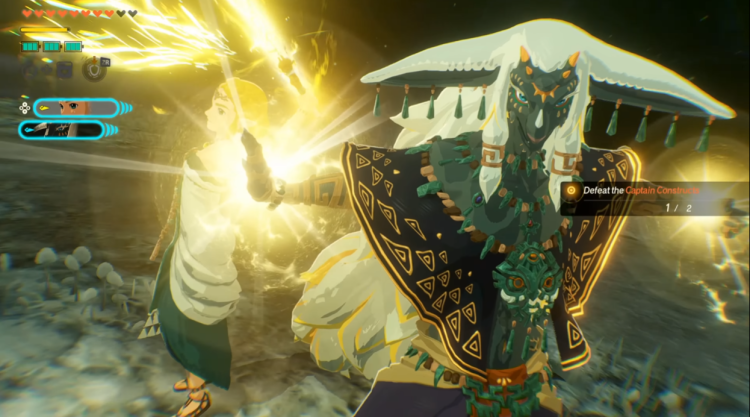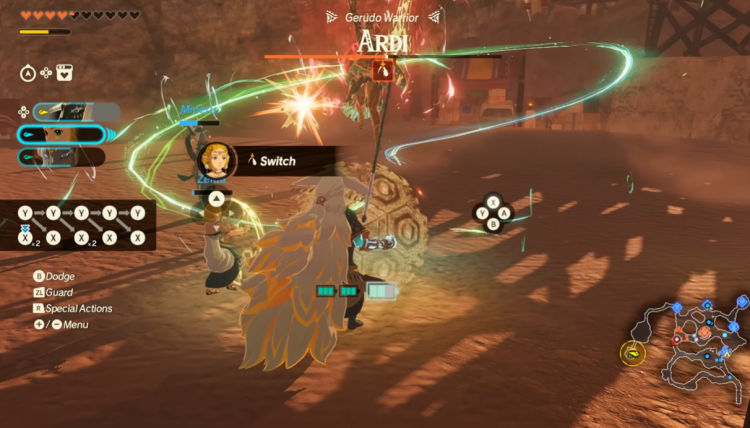Hyrule Warriors: Age Of Imprisonment Balances Strong Action With A Weak Story
Hyrule Warriors: Age of Imprisonment arrives with the weight of one of Nintendo’s most carefully built eras on its shoulders. It seeks to fill the long stretch of history left open by The Legend of Zelda: Tears of the Kingdom, a game that pushed the series’ mechanics in bold directions and left behind several questions about the origins of Hyrule’s founding age.
Logan Plant’s review on IGN situates the new Warriors entry squarely between those expectations and the realities of a musou title built around nonstop combat. He opens his assessment with a blunt measure of the experience:
"Age of Imprisonment only succeeds as the super fun, over-the-top, fanservice-filled power trip the Warriors series is known for rather than the fleshed-out glimpse into what Hyrule was like thousands of years ago." — Logan Plant
The campaign stretches across ancient fields, sky islands, and the oppressive depths introduced in Tears of the Kingdom. It revisits Hyrule’s landscape long before the events players know, but treats that world more as a setting for battle than a realm to explore. The core loop follows the familiar Warriors blueprint: thousands of enemies on screen, large-scale skirmishes, and a steady escalation of challenges tied to each map’s layout. Plant’s review underscores that Omega Force embraces every opportunity to weave recognizable elements of modern Zelda into this structure, producing some of the series’ most energetic combat.

The developers borrow Tears of the Kingdom’s mechanical language and reinterpret it with a level of playfulness that gives the campaign its strongest identity. Mineru, a character tied directly to the Zonai legacy, becomes a walking demonstration of this reinterpretation. She constructs improvised vehicles and weapons mid-battle; at one moment, she rides a single Zonai wheel, and at the next, she summons a rolling machine built from spikes. The style of action leans deliberately into the absurd, using the Zonai toolkit as a trigger for spectacle, yet it retains enough consistency to avoid collapsing into noise.
The uncomplicated nature of the controls contributes to its momentum. Age of Imprisonment relies on patterned sequences—repeated presses of Y before a finisher with X—but the animations carry the weight of the experience. Attacks land with a crisp rhythm, and new combos arrive at a steady pace. Even when a player leans heavily on button-mashing, the visual feedback maintains a sense of forward drive. Unlocking new abilities becomes a small reward loop of its own, one that Plant highlights as a constant source of anticipation. He points to Zelda’s Recall-infused moveset as one such example, a flourish that channels both the visual language and sound design of the mainline games.

The game also draws from Tears of the Kingdom’s approach to enemy interactions. Perfect dodges trigger Flurry Rush counters; well-timed arrow shots crumble a Construct; a well-placed bomb stuns a Frox. These mechanics anchor Age of Imprisonment to rules that fans already understand, but with an MMO-like breadth of tools. Every character has access to a shared inventory of Zonai devices, which helps expose enemy weaknesses and break gauges during boss encounters. Managing the battery behind these devices lends a modest tactical layer to otherwise straightforward fights.
Most of the campaign revolves around the interplay between combat and incremental upgrades. Between missions, the player reviews earned materials, strengthens weapons, expands combos, and selects the next sortie. There is far more content than the main story alone signals—Plant notes that after twenty hours, his completion rate sat at roughly a third, with numerous optional missions still locked behind progression requirements. The nature of the pacing ensures that missions rarely blend together: early chapters feature sludge-covered enemies that must be washed clean, while later ones use varied terrain and multi-character conditions to shift the flow of a battle.

Character-swapping becomes essential rather than supplementary. Positioning matters because certain enemy states demand specific counters, and the game encourages players to shift between heroes mid-fight. When a foe rushes forward, a grounded heavy character might intercept; when a boss takes flight, an aerial strike may be required. These transitions feed into a system called Sync Strikes, where two characters combine abilities for a brief, potent attack. The pairings often reflect narrative relationships, such as Zelda and Rauru combining light powers. The animation of a shared gesture—a high-five, a fist bump—adds a small but memorable callback to Tears of the Kingdom’s themes of connection.

Age of Imprisonment benefits from the performance afforded by the Switch 2 hardware. Plant contrasts this with the performance issues that hounded Age of Calamity, which frequently dipped into slideshow territory. Here, the game maintains near-constant 60 fps during single-player action despite dense enemy clusters. Two-player split-screen reduces that figure but still holds steady enough to deliver a playable, even lively cooperative experience. The main blemish is unexpected: cutscenes exhibit stutters and lower clarity, a mismatch that undercuts the polish of the combat engine.
The story occupies a complicated space. The premise promises a deeper look at the Imprisoning War, but the focus drifts from Zelda and the founding figures of Hyrule toward newly introduced characters: the Mysterious Construct and its Korok companion, Calamo. The Construct functions as a mechanical surrogate for Link, whose absence defines the narrative constraints. Plant argues that the shift feels like a missed opportunity. The new characters carry some charm—especially Calamo, who parallels past Zelda companions—but their prominence restricts the exploration of the era’s lore.

This affects the treatment of the Sages, the Zonai, and even Ganondorf. The Demon King appears infrequently, and the game offers little additional insight into his motives or past. The Zonai remain at arm’s length, referenced more than examined. Even the newly introduced Sages struggle to leave an impression, serving more as familiar archetypes than as distinct personalities. The result is a narrative that brushes past major historical events while devoting considerable time to characters who do not extend the established mythology.

The repetition of setting contributes to a sense of fatigue. After Breath of the Wild, Tears of the Kingdom, and Age of Calamity, this serves as a fourth visit to a similar version of Hyrule. Visual markers differ only slightly between eras; ancient Hyrule mirrors its future counterpart so closely that only dialogue clarifies the chronology. Long stretches feel unwilling to disrupt established canon, and in some cases, they avoid elaboration entirely. Plant notes moments when the story sidesteps significant beats from Tears of the Kingdom as if trying not to spoil them, a decision that narrows the prequel’s room to expand or reinterpret.
Some sequences do land. Zelda’s interactions with Mineru offer a quieter thread about shared interest in technology, and the campaign includes small nods to later developments. Yet the overall shape of the narrative leans more toward reinterpretation than revelation, rarely delivering the kind of background that would justify a prequel focused on pivotal history. For a game that closes the arc on one of the series’ most developed portrayals of Zelda, the farewell feels faint.
"But when the prequel we have to settle for in its place is a seriously fun action game with tons of optional content to keep you going, it’s still a trip into the past that’s well worth taking." — Logan Plant
Age of Imprisonment stands strongest as a combat showcase, one that builds on familiar systems with elaborate reinterpretations of Zonai technology, fluid character swaps, and the constant feedback loop of small rewards. Its ambitions as a prequel remain limited, but its mechanical confidence carries it through a lengthy campaign and beyond into its optional challenges. It extends the Warriors template without straining against its boundaries, even if it leaves much of Hyrule’s past unexplored.
5 Free Cases, Daily FREE & Welcome Bonuses up to 35%


EGAMERSW - get 11% Deposit Bonus + Bonus Wheel free spin
EXTRA 10% DEPOSIT BONUS + free 2 spins

Sign up now and get 2 FREE CASES + 5$ Bonus
3 Free Cases + 100% up to 100 Coins on First Deposit


Comments